What Makes India Famous
India, a country known for its vibrant culture and diverse heritage, is a land of captivating stories and rich traditions. In this journey, we delve into the heart of the nation, unraveling what makes India famous. India’s cultural diversity is a kaleidoscope of traditions, languages, and customs.
From the snow-capped mountains of the Himalayas to the tropical beaches of the south, each region boasts its own unique identity. Understanding what makes India famous goes beyond the surface—it’s about appreciating the tapestry that weaves together the nation’s past, present, and future.
Historical and Cultural Heritage
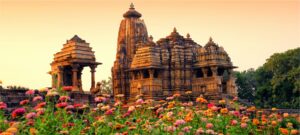
Ancient Civilizations and Historical Landmarks
India’s historical roots run deep, tracing back to ancient civilizations that have left an indelible mark on the world. The cradle of the Indus Valley Civilization, India’s ancient cities reveal advanced urban planning and intricate systems. The archaeological marvel of Mohenjo-daro stands as a testament to the sophistication of this ancient society.
Moving through time, India’s landscape is adorned with historical landmarks that narrate tales of valor, love, and grandeur. The iconic Taj Mahal in Agra, a symbol of eternal love, showcases the architectural brilliance of the Mughal era. Qutub Minar in Delhi, a towering masterpiece of Indo-Islamic architecture, stands as a silent witness to centuries of history.
UNESCO World Heritage Sites
India proudly boasts numerous UNESCO World Heritage Sites, each preserving a piece of its cultural mosaic. The ancient rock-cut caves of Ajanta and Ellora, adorned with exquisite sculptures and paintings, take visitors on a journey through time. The intricate carvings of Khajuraho temples depict a celebration of life, love, and spirituality, earning them a well-deserved place on the prestigious list.
From the majestic Red Fort in Delhi to the historic city of Jaipur, India’s UNESCO sites reflect the diversity and cultural wealth embedded in its heritage. These sites serve as a bridge connecting the contemporary with the ancient, allowing visitors to immerse themselves in the rich tapestry of India’s past.
Influence of Hinduism, Buddhism, and Other Religions
India’s cultural heritage is inseparable from its religious diversity, with Hinduism, Buddhism, Jainism, Sikhism, and more contributing to the nation’s spiritual legacy. The ancient city of Varanasi, nestled along the sacred Ganges River, is a spiritual hub for Hindus, embodying the essence of their beliefs and rituals.
Bodh Gaya, where Siddhartha Gautama attained enlightenment, stands as a pilgrimage site for Buddhists from around the globe. The intricate carvings of Ajanta and Ellora caves depict scenes from Buddhism, showcasing the cultural fusion that occurred through centuries.
The harmonious coexistence of multiple religions is evident in monuments like the Golden Temple in Amritsar, a spiritual haven for Sikhs. This religious diversity not only shapes India’s cultural identity but also fosters a spirit of tolerance and acceptance.
Culinary Delights
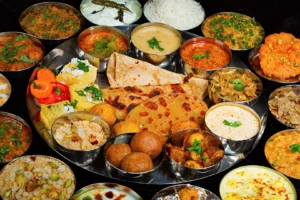
Diverse Regional Cuisines
Embarking on a gastronomic journey through India means surrendering to a symphony of flavors that vary from region to region. In the north, the aromatic biryanis and kebabs tantalize the taste buds, with the iconic Butter Chicken representing the epitome of Punjabi cuisine. Moving south, the coconut-infused curries of Kerala and the tangy rasams of Tamil Nadu provide a sensory explosion unique to the region.
The western state of Gujarat introduces a tapestry of vegetarian delights, showcasing dishes like dhokla and thepla. Eastern India, with its emphasis on fish and rice, boasts mouthwatering Bengali sweets like rasgulla and sandesh. Each region, from the bustling streets of Mumbai to the serene backwaters of Kerala, contributes to India’s culinary kaleidoscope.
Iconic Dishes and Street Food
India’s culinary fame extends beyond its borders, and at the heart of it lies a collection of iconic dishes that have become global sensations. The fragrant biryani, a fragrant marriage of rice and spices, holds a special place in the hearts of food enthusiasts worldwide. The crispy dosa, a south Indian delicacy, serves as a canvas for an array of flavorful fillings.
Venturing into the bustling streets reveals a world of culinary creativity. From the spicy pani puri bursting with tangy flavors to the savory chaat enticing taste buds, Indian street food is a celebration of textures and tastes. Seek out the sizzling kebabs and aromatic chai on every corner, and you’ll understand why India’s street food is renowned globally.
Role of Spices in Indian Cuisine
At the core of India’s culinary fame lies its vibrant and aromatic spices, which transform ordinary ingredients into extraordinary dishes. Turmeric, with its earthy undertones, not only adds color to curries but also carries medicinal properties. Cumin, coriander, and cardamom create layers of flavor, while the fiery chili peppers bring the perfect balance of heat.
The spice markets of India, like those in Old Delhi, are a sensory overload of colors and aromas. The art of blending these spices passed down through generations, is what makes Indian cuisine a symphony for the taste buds. Understanding the role of spices unveils the cultural significance woven into every dish, making each meal a celebration of India’s culinary heritage.
Read – 10 of the Most Romantic Hotels in the World
Vibrant Festivals

Overview of Major Festivals
India, often referred to as the “Land of Festivals,” boasts a calendar filled with vibrant celebrations that reflect the diversity and richness of its cultural tapestry. Diwali, the Festival of Lights, marks the victory of light over darkness and is celebrated with the illumination of homes, fireworks, and the exchange of sweets. Holi, the Festival of Colors, sees streets and people adorned in a kaleidoscope of hues, symbolizing the triumph of good over evil.
Navratri, a nine-night festival dedicated to the goddess Durga, involves energetic dance forms like Garba. Eid, celebrated by the Muslim community, is marked by feasts and prayers. Each festival carries its unique significance, showcasing the harmonious coexistence of various religious and cultural practices.
Unique Cultural Celebrations
Beyond the major festivals, India’s cultural calendar is dotted with region-specific celebrations that add layers to the country’s festive fervor. Pongal in the south, Baisakhi in the north, and Bihu in the east are agricultural festivals celebrating harvests in distinct ways, reflecting the agrarian roots of Indian society.
The Kumbh Mela, one of the world’s largest religious gatherings, attracts millions of pilgrims who come to bathe in the sacred rivers. The Rath Yatra in Puri sees grand processions of intricately decorated chariots, a spectacle that draws devotees and tourists alike. Exploring these unique celebrations provides a deeper understanding of the cultural intricacies embedded in India’s festive spirit.
Influence on Tourism and Global Celebrations
India’s festivals are not confined to its borders; they have a global allure, attracting tourists from around the world. The mesmerizing spectacle of the Varanasi Ganga Aarti during Dev Deepawali draws visitors seeking a spiritual experience. The Jaipur Literature Festival, a celebration of literature and ideas, has gained international acclaim, bringing authors and readers together.
Moreover, Indian festivals have permeated global cultures. Diwali celebrations are held in various cities worldwide, and yoga and meditation events during International Yoga Day echo the spiritual practices rooted in India. The global impact of India’s festivals serves as a testament to the country’s cultural influence on a worldwide scale.
Bollywood and Indian Cinema

Impact of Bollywood on Global Cinema
Bollywood, the vibrant heart of Indian cinema, has transcended borders to become a global cultural phenomenon. The colorful song-and-dance sequences, dramatic narratives, and larger-than-life productions have captured the imagination of audiences worldwide. The influence of Bollywood on global cinema extends beyond entertainment, shaping perceptions of Indian culture and storytelling.
From iconic classics like “Sholay” to contemporary blockbusters like “Dangal,” Bollywood films resonate with diverse audiences, contributing to the globalization of Indian cinema. The industry’s unique blend of tradition and modernity has carved a niche that continues to captivate film enthusiasts globally.
Renowned Actors and Filmmakers
Bollywood has been a breeding ground for some of the world’s most celebrated actors and filmmakers. Legends like Amitabh Bachchan and Dilip Kumar have become cultural icons, their performances leaving an indelible mark on the cinematic landscape. Filmmakers such as Satyajit Ray, known for his artistic brilliance, have earned international acclaim, showcasing the depth and diversity of Indian cinema.
The emergence of new-age actors like Deepika Padukone and directors like Anurag Kashyap signifies the evolving nature of Bollywood, constantly pushing creative boundaries. Recognizing the contributions of these cinematic maestros provides a glimpse into the evolution of Indian storytelling on the global stage.
Cultural Influence Through Film and Entertainment
Bollywood’s impact extends far beyond the silver screen, influencing fashion, music, and societal norms. The fashion trends set by Bollywood stars often transcend borders, with fans worldwide emulating their style. The music of Bollywood films, characterized by catchy tunes and rhythmic beats, has become a global sensation, featuring in international music charts.
Architectural Marvels
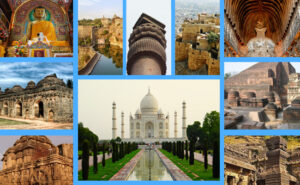
Mughal Architecture and Historical Monuments
India’s architectural landscape is a testament to the grandeur of its historical epochs, with Mughal architecture standing tall as a symbol of artistic brilliance. The Red Fort in Delhi, built by Emperor Shah Jahan, showcases the intricate fusion of Persian, Timurid, and Indian styles. The Taj Mahal, a UNESCO World Heritage Site, epitomizes love and symmetry, with its white marble façade leaving visitors awe-inspired.
Exploring the Mughal architectural marvels unveils a world of delicate carvings, geometric patterns, and serene gardens, each monument narrating tales of a bygone era.
Modern Architectural Achievements
India’s architectural prowess isn’t confined to the pages of history; it also extends to contemporary masterpieces that redefine the skyline. The Lotus Temple in Delhi, an architectural gem of the Bahá’í Faith, showcases the harmony between nature and spirituality with its lotus-shaped design. The Akshardham Temple in Gandhinagar seamlessly blends traditional craftsmanship with modern technology, creating a visual spectacle.
These modern marvels represent the nation’s ability to embrace innovation while preserving its cultural heritage, marking a dynamic shift in architectural expression.
Fusion of Traditional and Contemporary Design
One of the distinctive features of India’s architectural landscape is the seamless fusion of traditional and contemporary design elements. The City Palace in Udaipur, with its intricate glasswork and ornate balconies, exemplifies this blend. Traditional havelis in Rajasthan adorned with frescoes coexist with modern skyscrapers in cities like Mumbai and Bangalore.
This harmonious integration of the old and the new not only preserves India’s architectural heritage but also reflects a forward-thinking approach to design and urban planning. The architectural tapestry of India tells a story of evolution, resilience, and an unwavering connection to its roots.
Sports and Achievements
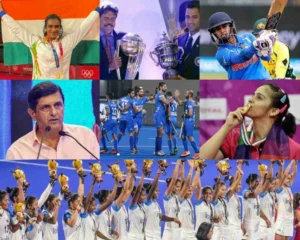
Cricket and Its Cultural Significance
Cricket, more than a sport, is a cultural phenomenon in India. The echoing cheers in cricket stadiums, the frenzy during IPL seasons, and the emotional rollercoaster of India-Pakistan match define the cricketing landscape. Legends like Sachin Tendulkar and Virat Kohli have become national icons, their achievements etched in the hearts of millions.
Cricket isn’t just a game; it’s a shared passion that unites a diverse nation, providing moments of joy, heartbreak, and collective pride. The cultural significance of cricket transcends the boundary of the playing field, influencing the nation’s identity and sense of unity.
Other Successful Sports and Athletes
Beyond the cricketing field, India has produced a multitude of sporting heroes who have excelled on the global stage. Mary Kom’s prowess in boxing, P.V. Sindhu’s badminton triumphs, and Abhinav Bindra’s historic gold in shooting exemplify the diversity and excellence in Indian sports.
Athletes like Milkha Singh, the Flying Sikh, and P.T. Usha have left an enduring legacy, inspiring generations to pursue excellence in sports. As India continues to diversify its sporting achievements, these athletes become ambassadors of resilience, determination, and the pursuit of greatness.
Hosting Major International Sporting Events
India’s global sporting footprint extends to hosting major international events, showcasing its capability to organize and manage large-scale competitions. The Indian Premier League (IPL), a cricket extravaganza, has become one of the most-watched and lucrative cricket leagues globally. The 2010 Commonwealth Games in Delhi and the 2017 FIFA U-17 World Cup highlighted India’s infrastructure and organizational capabilities.
Hosting such events not only boosts tourism but also positions India as a formidable player in the global sporting arena. The impact of these events goes beyond the competition, leaving a lasting legacy in terms of facilities, sports culture, and international collaboration.
Read – 10 Romantic Destinations for Couples Kayak Adventures: Paddle Your Way to Love
Conclusion
In the grand tapestry of India’s cultural richness, historical significance, culinary delights, vibrant festivals, artistic expressions, cinematic brilliance, architectural marvels, sporting achievements, and global contributions, a multifaceted identity emerges. The journey through the diverse facets of India is not merely an exploration but an immersion into a nation that defies singular definition.
As we traverse the landscapes of ancient civilizations, savor the myriad flavors of regional cuisines, dance to the rhythm of festivals, and marvel at architectural wonders, the intricate threads that bind the nation together become evident. Bollywood’s cinematic symphony, the roar of the cricket stadium, and the global resonance of yoga further amplify India’s presence on the world stage.
FAQs
A. What is India Most Famous for Globally?
India is globally renowned for its cultural diversity, historical landmarks, vibrant festivals, Bollywood, yoga, and economic prowess.
B. How Has India’s Fame Evolved Over the Years?
India’s fame has evolved from being predominantly culturally rich to encompassing economic achievements, technological advancements, and global contributions.
C. What Are Some Misconceptions About Famous India?
One common misconception is reducing India’s fame to stereotypical images, overlooking its multifaceted identity that spans culture, economy, and global impact.
D. How Does India’s Fame Contribute to Its Tourism Industry?
India’s fame acts as a magnet for tourists, drawn by the allure of its cultural richness, historical wonders, and diverse landscapes, significantly boosting the tourism industry.
E. What Role Does India Play in the Global Economy?
India has transitioned from a regional player to a global economic powerhouse, contributing significantly to international trade, technology, and various economic sectors.

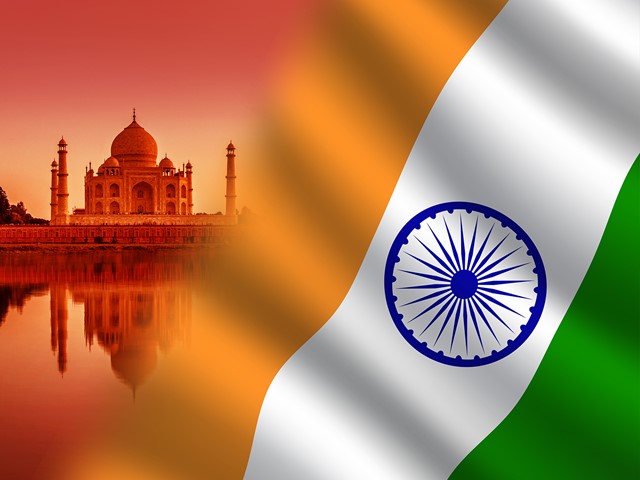



No Comments